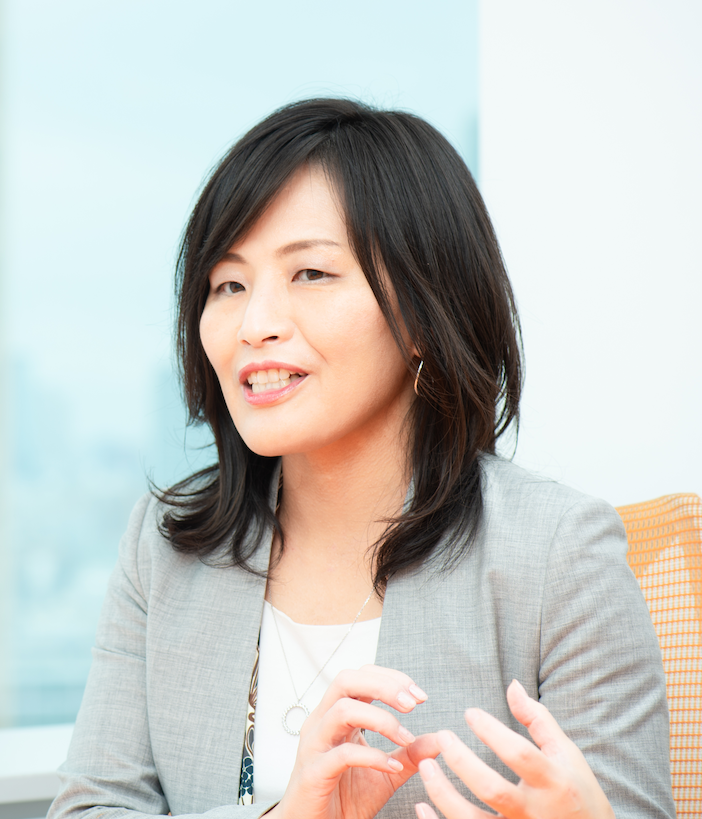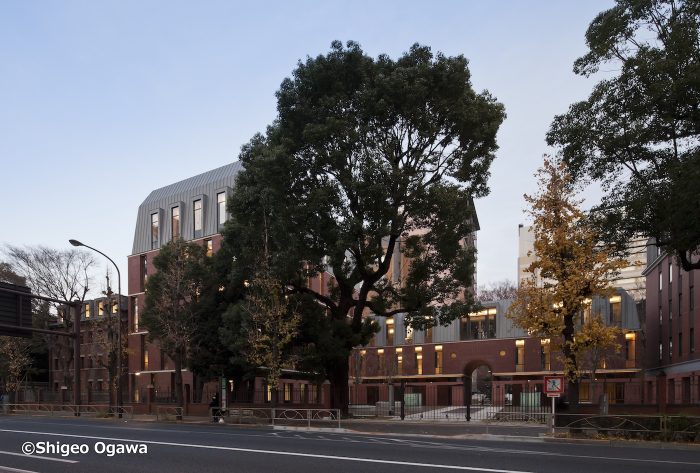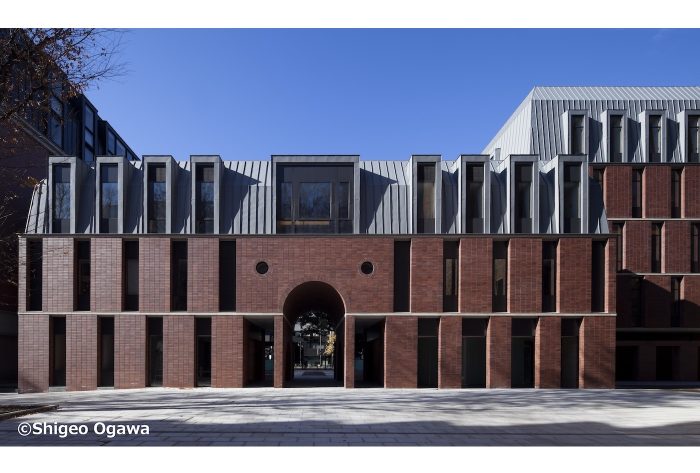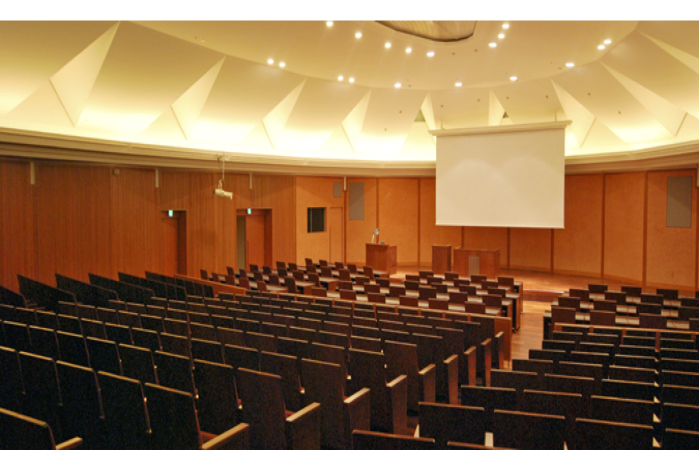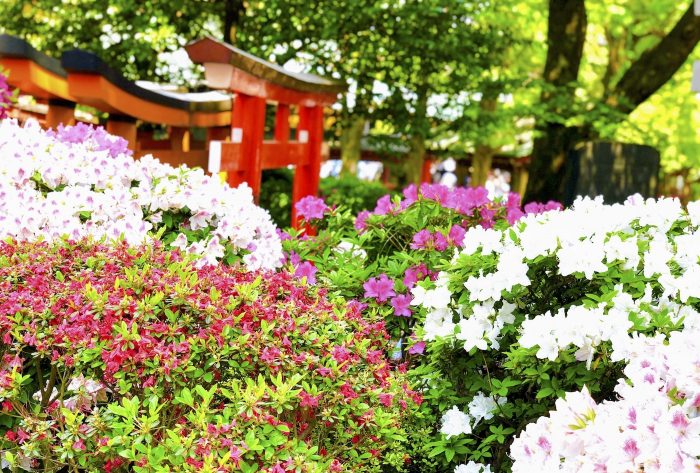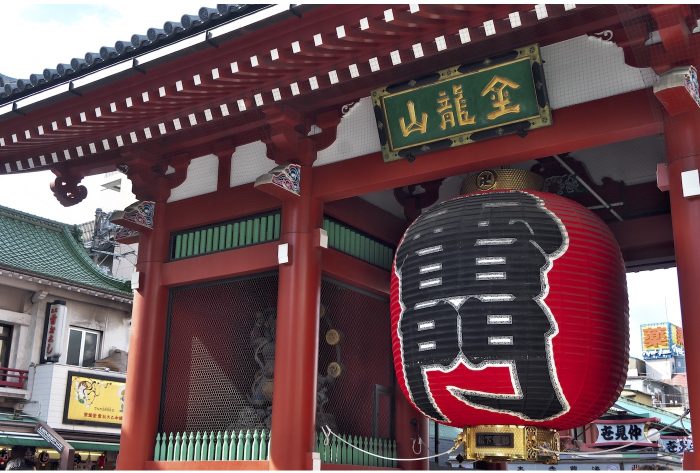Association for the Scientific Study of Consciousness
July 2-5, 2024
Welcome
Important Information for Day One Attendees
Please ensure you visit the registration desk at the Ito International Research Center. Most tutorials will be held in the same building, but the opening session will be in the larger Yasuda Auditorium. If you plan to join the conference from the opening session, please stop by the registration desk beforehand and receive your participation certificate. Please note that, for those whose payment is confirmed after June 24, the name and affiliation will not be printed on their participation certificate, so please fill them out on site by yourself.
The reception dinner will be held at Totenko, which is located along the Shinobazu-no-ike Pond northeast of the campus and we will walk there from Yasuda Auditorium.
First authors of presentations (concurrent talks and posters) are required to register for the conference. Please ensure you complete your registration, if you haven’t done so!
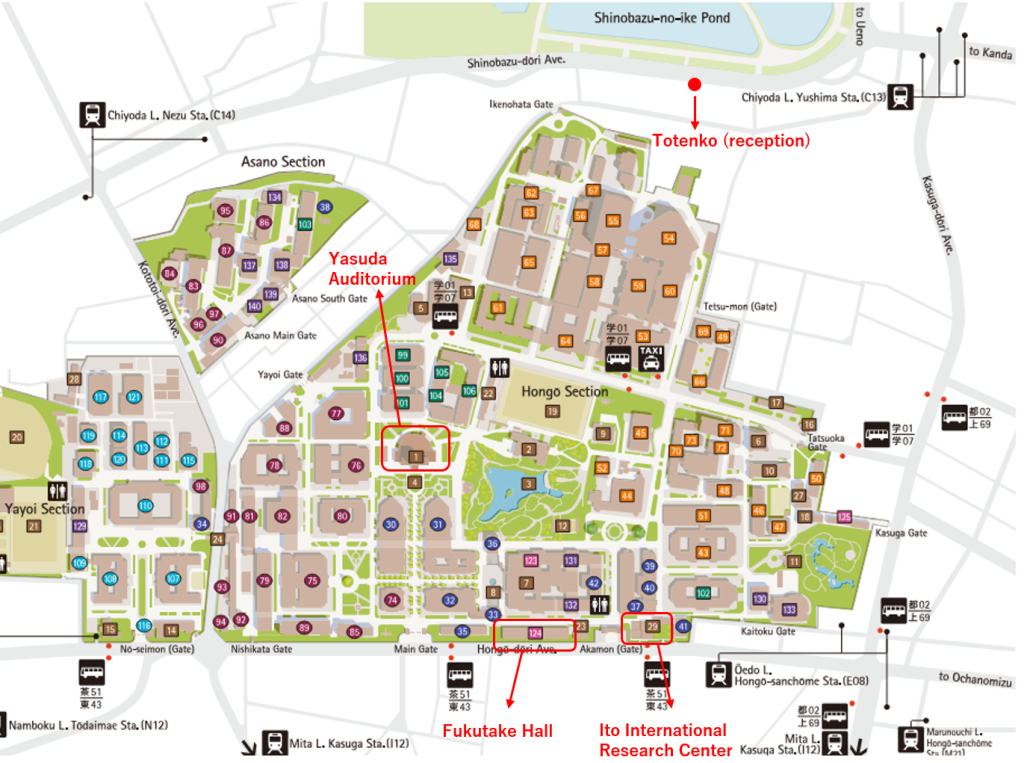
Registration
Registration period
Early Bird: February 1 – May 31, 2024 (23:59 AoE (Anywhere on Earth))
Regular: June 1 – July 5, 2024
Registration Fee
| Early Bird (February 1 – May 31) | Regular (June 1 – July 5) | |
|---|---|---|
| ASSC member faculty or equivalent | 60,000JPY | 66,000JPY |
| ASSC member post-docs or equivalent | 47,000JPY | 52,000JPY |
| ASSC member students | 27,000JPY | 30,000JPY |
| ASSC non-member | 80,000JPY | 90,000JPY |
Payment Method
Credit card: VISA, MasterCard, AMEX, JCB, Diners Club or Discover
We cannot accept overseas money transfer.
Please pay by credit card if you live outside Japan / do not have Japanese bank account.
Payment Deadline
Early Bird: February 1 – May 31, 2024 (23:59 AoE (Anywhere on Earth))
Regular: June 1 – July 5, 2024
Registration will be cancelled unless the payment is confirmed by the deadline.
How to Register online
- Click “Registration” button, follow the instructions on screen and fill in the form.
- Please be sure to select the correct Registration Category.
- If you are an ASSC Member, After logging in to https://theassc.org/login/, please display https://theassc.org/assc-27/ to find your Authorization Code.
- If you wish to participate in the conference dinner and tutorials, please select the one you are interested in. They are charged independently of the conference participation fee.
- You will receive an automatic reply mail from the registration desk (assc27@online-conference.jp) to verify your email address. Please click the “Verify Email Address” button in the email.
- You can access “My Page” using your ID and password after you complete your payment and receive a final confirmation from the registration desk.
Note
Once payment has been made, no refunds can be made for any reason.
Receipt, Certificate
A participation certificate with your name and affiliation printed on it will be distributed at the venue.
However, for those whose payment is confirmed after June 24, the name and affiliation will not be printed, so please fill them out on site by yourself.
Receipts can be downloaded from “My page” from early June 2024.
- Login ID: Your email address
- Password: set your password by yourself.
Please keep your password since Registration Desk / Secretariat cannot inform you your encrypted password.
Passport and Visa
A valid passport is required to enter Japan. Participants from certain countries may be required to obtain a visa to enter Japan.
If you are uncertain about your requirements, please consult your nearest Japanese Embassy or Consulate, or visit the website of the Ministry of Foreign Affairs of Japan (http://www.mofa.go.jp/j_info/visit/visa/index.html).
If you aren’t an invitee, please apply for a tourist visa.
Registration Desk
c/o Procom International Co., Ltd.
TFT Bldg. East Wing 9F, 3-6-11 Ariake Koto-ku Tokyo, 135-0063 JAPAN.
E-mail registration@online-conference.jp
Nursery room
ASSC27 will have a nursery room. Please find the details to click here.
*Following the ASSC27 meeting (Tokyo, July 2-5) is the Australasian Association of Philosophy’s 2024 conference (Perth, July 7-11). We include this information for the benefit of visitors who may wish to include both conferences in their travel plans.
Conference Schedule
An overall conference schedule is available here.
A summary of the program in addition to a comprehensive list of abstracts are available for download in PDF form. Those who register will also receive an invitation to the program app, Whova, within 12-24 hours of registration.
This year, we had a relatively large number of presenters who were unable to come at the last minute, perhaps reflecting the physical and financial burden of long-distance travel to Japan. Therefore, we have done our best to keep the program up-to-date.
However, the printed program booklet is unfortunately not up-to-date; we have updated the PDF and Whova as much as possible, but we hope you understand that it is not perfect due to time constraints.
Keynote Speakers
July 2 Evening
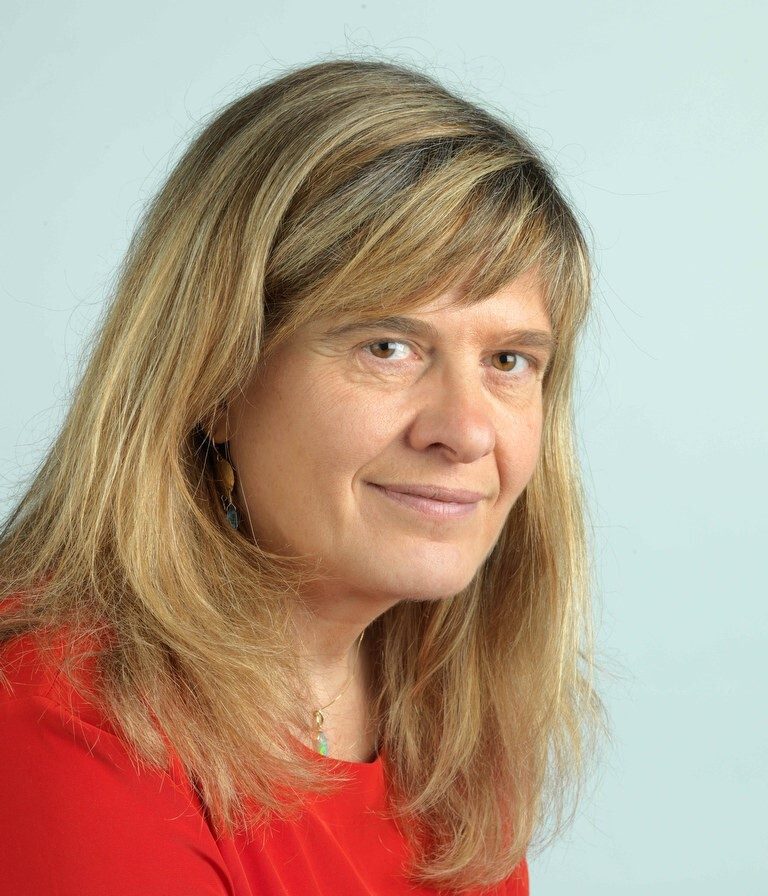
Prof. Ghislaine Dehaene-Lambertz
CNRS ERL 9003, INSERM U992, CEA, Université Paris-Saclay, NeuroSpin Center, Gif/Yvette, France, Director of the Developmental Neuroimaging Lab,
President of the ASSC
July 3 Morning

Institute of Cognitive Neuroscience, University College London, Professor of Cognitive Neuroscience
July 4 Morning
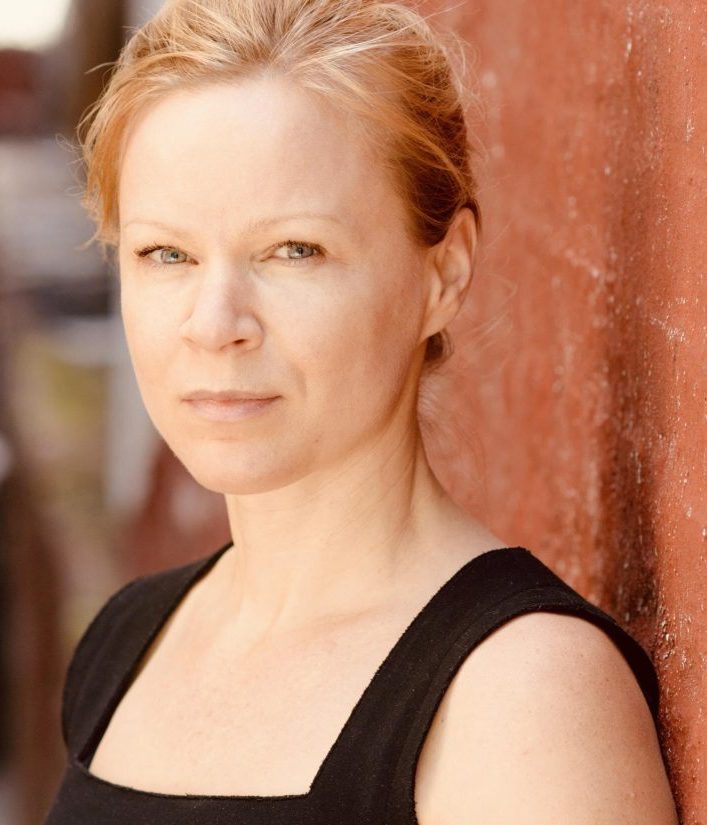
Rutgers, Distinguished Professor of Philosophy and Cognitive Science
In Memory of Daniel Dennett (1942-2024)

Join us in honoring the life and legacy of Daniel Dennett who recently passed earlier this year.
Memorial Event:
Date: July 3, 2024
Time: 19:15 – 20:00
Location: Ito Hall, Ito International Research Center (U. Tokyo)
Speakers:
- David Chalmers
- Carolyn Dicey Jennings
We welcome you to share this moment of remembrance and reflection.
* Original image by © Richard Stout, licensed under CC BY-SA 3.0. Changes were made to convert the image to black and white.
Tutorials
Morning Tutorials
July 2 (Tue) 9am-12pm (Venue: Fukutake Learning Theater)
Multi-modal neurophysiological techniques to assess patients with disorders of consciousness (Karnig Kazazian, Marzia De-Lucia, Mario Rosanova, Arianna Sala, Paolo Cardone)
Disorders of consciousness (DoC) affect millions of people worldwide. In recent years, advanced imaging and electrophysiological (AIE) methods have transformed our understanding of residual and covert conscious processing in patients who appear unresponsive at behavioral examination after severe brain injury. Multiple AIE techniques and paradigms have been developed to assess brain activity, and in some cases, detect preserved consciousness in patients that appear to be unresponsive. In this tutorial, an interdisciplinary group of experts will outline how state-of-the-art AIE techniques can be used to detect preserved brain activity at the individual subject level, in cases where the presence of sensory, motor and cognitive impairments might prevent the expression of consciousness. The tutorial is designed following a multimodal, integrated approach, where speakers will alternate and interact in presenting practical applications of all major techniques and paradigms available to assess brain activity in DoC, including electrophysiology (electroencephalography (EEG) alone and in combination with transcranial magnetic stimulation (TMS-EEG)), functional neuroimaging (functional magnetic resonance imaging (fMRI) and functional near-infrared spectroscopy (fNIRS)) and imaging of metabolic activity (positron emission tomography (PET)). The tutorial will be divided into three main parts. First, a theoretical session where we will provide a short introduction to DoC and the evolution of neuroimaging and electrophysiological assessment in DoC, followed by a presentation of each technique and the indices of consciousness that each method can provide. Second, an interactive hands-on session where real clinical cases, and the results obtained from a multimodal assessment (fMRI, fNIRS, PET, EEG, TMS-EEG), are critically discussed. Third, a demonstrative session where the participants will have the chance to be guided through a recorded TMS-EEG session, and through an overview of analysis techniques for TMS-EEG, EEG, and PET. The tutorial will be designed to be highly interactive, with Q&A times throughout the sessions. In session 1), the speakers will provide the attendees with hands-on guides and materials to run data processing and independently derive the indices of consciousness discussed during the tutorial. Active participation will be encouraged in sessions 2) and 3). Information on open-access resources to download freely accessible neurophysiological and neuroimaging datasets will also be provided. At the end of this tutorial, participants will have gained a general overview of how different paradigms can hierarchically detect various aspects of conscious processing and how AIE techniques can support diagnosis, prognosis, and guide rehabilitation. Attendees will also gain an understanding of the practical and technical implications of using AIE as well as the benefits and limitations of their application in DoC patients. We believe that the varying perspectives and insights from this tutorial will lead to increased knowledge and awareness of how advanced neuroimaging techniques can detect the neural correlates of consciousness in patients with DOC.
July 2 (Tue) 9am-12pm (Venue: Ito Hall, Ito International Center)Contemporary AI systems and the science of consciousness (Robert Long, Jonathan Simon)
This tutorial has been cancelled due to unavoidable and sudden circumstances. Refunds will be issued to those who signed up for this tutorial.
July 2 (Tue) 9am-12pm (Venue: Gallery 1, Ito International Center)
Funding and Sharing Consciousness Science (Nora Bradford, Megan Peters, Brian Odegaard)
Because consciousness science suffers from language barriers with other fields, successfully applying for consciousness research funding can be a challenge. Communicating the excitement, rigor, and importance of consciousness science to the general public can prove harder still. These challenges in part stem from unfamiliarity and in part from general skepticism about consciousness science itself and its perceived overlap with fringe or pseudoscience, but this skepticism is significantly exacerbated – indeed, perhaps fueled – by difficulties in communicating the goals, approaches, and promise of consciousness research to scientists in related disciplines (perception, attention, neuroscience, medicine, AI, etc.) and to the educated general public due to specialized vocabularies. At worst, these communication barriers can result in a general perception that consciousness science is fundamentally questionable in its rigor; at best, they muddy outsiders’ understanding of our burgeoning and rigorous field, reduce probability that funding applications will be successful, and reduce the impact of scientific advances on basic science, medicine, ethics, and more
Through this tutorial, we hope to (1) help consciousness science researchers develop tools and language to effectively communicate about their research to people outside of their field, including funders; and (2) create connections and collaborations between participants as they brainstorm fundable consciousness-related projects and communication strategies together. Success in these goals is paramount to the field of consciousness science as it continues to proliferate and influence related fields such as perception, medicine, AI, and more. The time is ripe for a concerted and unified effort from the ASSC community to improve our collective communication for the benefit of our field, both with increased funding for empirical studies and accurate coverage of our exciting findings in public spheres.
The tutorial will include three core activities:
Tutorial presenters will share insights from their recent “Fund Consciousness Science” workshop (generously funded by the Templeton World Charity Foundation), which brought together early-career researchers in consciousness science and related disciplines for two days to discuss overlapping interests and expertise. The workshop also included senior researchers in consciousness science and nearby disciplines who had successfully competed for funding via mainstream mechanisms, as well as program officers from four United States based organizations to help guide and hone the messaging to be compelling and persuasive to a broader audience of scientists and grant reviewers from outside consciousness science.
We will also reach out to funding agencies outside of the U.S. and add their input in order to make the tutorial useful for non-U.S. researchers.
We will also include presentations and insights on presenting consciousness science in written and oral form to non-specialist audiences, including public outreach. In light of the recent boom in coverage of consciousness research, science journalist Nora Bradford will also share tips for talking to journalists.
An interactive workshop component will group workshop attendees based on their answers to surveys distributed before the meeting. Small groups will discuss and brainstorm how they can hone their messaging to best convey their science to both funding agencies and the general public.
July 2 (Tue) 9am-12pm (Venue: Conference Room Seminar Room, Ito International Center)
Integrated Information Theory (William Marshall, Melanie Boly, Graham Findlay)
In this tutorial, we will present the integrated information theory (IIT) of consciousness. The tutorial will be based on the recent paper, “Integrated Information Theory (IIT) 4.0: formulating the properties of phenomenal existence in physical terms” and its primary focus will be on the mathematical framework of the theory. There will be a brief introduction to the phenomenal axioms that form the basis of the theory, and their translation into physical postulates. For IIT, physical is meant operationally, as causes and effects that can revealed through manipulation and observation. IIT proposes an explanatory identify, that all aspects of subjective experience can be explained from the physical (cause-effect) properties of its substrate, with no additional ingredients or intrinsic properties of the units. Following the introduction, we will present IIT’s mathematical framework for quantifying cause-effect power, referring to the postulates throughout. The exposition will include simple “by hand” examples, as well as more detailed computational examples using the PyPhi software package. We will demonstrate how the mathematical framework can be used to explain why some substrates are conscious, while others are not (the quantity of experience), and why a substrate feels the way that it does (the quality of experience). Finally, we will conclude with a discussion of the explanations, predictions, and inferences that follow from the theory.
July 2 (Tue) 9am-12pm (Venue: Seminar Room Conference Room, Ito International Center)
Philosophy of Perception for Consciousness Sciences (Tony Cheng, Yuko Ishihara, John O’Dea, Takuya Niikawa)
It is commonplace that philosophy and sciences collaborate with regard to consciousness, but the branch “philosophy of perception” has been developing in relatively isolated ways. Not only views such as naïve realism and adverbialism tend to be unintelligible for the scientists; philosophical discussions of sounds, smells, and individuating the senses tend to be neglected by the sciences. We hope to put up a tutorial that remedies the situation: in getting more scientists to be aware of such discussions in philosophy of perception, it will be helpful for interdisciplinary research about both perception and consciousness.
To this end, we will have four experts in the field of philosophy of perception, and they will sample some specific areas to introduce and lead discussions. The aim is not to be comprehensive; rather, we will make sure the selected topics of philosophy of perception can become intelligible to consciousness scientists so that meaningful intellectual interactions will become possible.
A. Spatial Perception and Multimodality
Tony Cheng
Are all sense modalities spatial? For those spatial ones, are they intrinsically spatial, i.e., at least some of their spatiality are not derived from other senses or faculties? We will begin by comparing sight and touch, by way of discussing Molyneux’s question, and extend our discussions to other senses, such as audition, olfaction, thermoception, etc. We will also cover multimodal perceptions such as synaesthesia and the ventriloquism effect.
B. Temporal Perception and the Self
Yuko Ishihara
It seems that all of our sense modalities are temporal, but their temporal profiles seem to differ significantly. There are many theoretical questions we can ask here: how do we perceive change? What can we understand about time itself from our perceptual experiences? How can we understand the unity of consciousness over time? And how does the temporal existence of our consciousness relate to ourselves as persons or selves?
C. Perceiving Other Minds
John O’Dea
If we distinguish between features of the world that we perceive and features that we can only infer, it is natural to think that we infer the minds of others, rather than perceive them. But this has often been disputed in philosophy, especially in the past century, with increasing empirical support. On what grounds might one think that we can actually perceive the minds of others? In what sense? If minds can (in some sense) be perceived, how might this affect theories of consciousness?
D. Metaphysics of Perceptual Experiences
Takuya Niikawa
Many metaphysical theories on perceptual experiences, such as intentionalism and naive realism, have been proposed and developed among the community of philosophers. For scientists, however, it may seem unclear what they aim to explain, how they can be assessed, and how they are related to scientific understandings of perceptual consciousness. This part addresses those questions from the side of philosophers.
We will make sure to have enough breaks and discussion times in the session.
Afternoon Tutorials
July 2 (Tue) 1pm-4pm (Venue: Fukutake Learning Theater)
Measures and computational models of metacognition (Stephen Fleming, Megan Peters)
In this tutorial, we will introduce a range of different measures and computational models of metacognition, and provide a practical guide to fitting and comparing different models. The first part of the tutorial will cover the conceptual distinction between metacognitive sensitivity, efficiency and bias, and explore the pros and cons of different approaches to measuring these parameters. We will focus on the theory underpinning the meta-d’ model (a gold standard measure of metacognitive sensitivity), and its powerful and flexible hierarchical Bayesian extension (HMeta-d).
In the second part of the tutorial we will explore next-generation computational models of confidence, and consider the relationship between simpler “measures” and more complex “models” of metacognition. We will introduce the models in an accessible way and discuss practical issues that arise when fitting computational models to behavioural data. We will step through code examples and build confidence amongst participants in being able to use these tools in their own projects.
The presenters are both active researchers in the field, leading research groups studying the computational and neural basis of metacognition. Of particular relevance to the current tutorial, Fleming is the lead developer of the HMeta-d toolbox, and Peters is developing new approaches to arbitrating between computational models of confidence. Versions of this tutorial has been delivered successfully at previous ASSC meetings (in 2017 in Beijing, in 2022 in Amsterdam and in 2023 in New York), at the Zurich Computational Psychiatry Course (in 2019 and 2021) and at the UCL-PSL Summer School on Consciousness and Metacognition (in 2021 and 2023). This year’s tutorial is comprehensively updated to encompass the fast-developing field of computational models of confidence. The accompanying code is thoroughly documented and freely available and will be a valuable resource for participants to apply meta-d’ analysis to their own data (https://github.com/metacoglab/HMeta-d/blob/master/CPC_metacog_tutorial/cpc_metacog_tutorial.m). To follow along with the code examples, participants will need a laptop with Matlab and JAGS installed.
July 2 (Tue) 1pm-4pm (Venue: Ito Hall, Ito International Center)
What Even Is Structure? – A Tutorial on the Meaning and Reference of Structure in Phenomenal, Qualitative and Experiential Spaces (Johannes Kleiner, Joanna Szczotka, Chen Song, Lucia Melloni, Andrew Lee, Sascha Benjamin Fink)
By now, virtually all fields engaged in consciousness science have begun to address structural features of consciousness. Recognizing that even detailed verbal descriptions fall short of capturing the full depth and richness of conscious experience, structural approaches aspire to apply more holistic, precise and nuanced means of describing phenomenal character using mathematical structures or mathematical spaces. Structural ideas are expounded in great mathematical detail, are imputed to theories of consciousness, have become the central aim of many experiments on consciousness, are an increasing focus of philosophical theorising about consciousness, and are in the process of shaping what we pre-theoretically think about the problem of consciousness.
Yet, at the same time, there is no shared understanding of what the term ‘structure of consciousness’–or similar mathematical terminology–actually refers to. There are various ideas of what exactly terms like ‘structure’ or ‘space’ mean, over and beyond the question of which properties or modalities they target. Much of contemporary research rests on intuitive understandings of these terms, or on reference to results implanted from psychophysics. The question of how one should understand or define the term ‘structure of consciousness’ is far from settled.
In addition, even when a mathematical structure is rigorously defined, it remains non-trivial to further specify how exactly it translates to phenomenological terms or properties (the ‘Rosetta Stone Problem’ of David Chalmers).
The goal of this tutorial is to discuss and assess possible ways of understanding the terms ‘structure’ or ‘space’ when applied to conscious experience. The aim is to bring to the table a list of all major contemporary ways of defining structural terms, together with a clear emphasis of the respective merits, drawbacks, and connections. Fundamentally, the goal is to counteract the vagueness and ambiguity that veils the use of this terminology at present, so as to move towards a more informed, grounded and unified scientific programme.
Critically, the tutorial aims for an interactive format that includes participants in the exploration of these questions. 6 speakers will present their own views on the titular question in a short talk, leaving ample time for extended discussions of these proposals that make room for the participants’ expertise as well.
Ambiguities in understanding and conceptualising the core objects of structural research bring a risk of mutual misunderstanding, may misdirect effort, and in the worst case undermine a strong structural research programme. With this tutorial we hope to help resolve this fundamental issue, so as to support a rigorous science of consciousness.
Talks in this session:
1.) Joanna Szczotka – “What are Structural Properties of Consciousness? – Perspectives from IIT”
2.) Johannes Kleiner – “What is a Mathematical Structure of a Conscious Experience?”
3.) Chen Song – “Deconstruct and Reconstruct Consciousness: When the Part Conceals the Whole”
4.) Andrew Lee – “Structure vs Qualities”
5.) Lucia Melloni – “Phenomenal Structure and Phenomenal Spaces: What is That?”
6.) Sascha Benjamin Fink – “Limits and Prospects of Structural Approaches to Consciousness”
July 2 (Tue) 1pm-4pm (Venue: Gallery 1, Ito International Center)
Bridging spatiotemporal scales of conscious processing using The Human Neocortical Neurosolver (HNN) multiscale modeling software (Andrew Dykstra, Stephanie Jones, Tomáš Marvan, Carolina Fernandez)
Since the launch of the search for the neural correlates of consciousness (NCCs), the field of consciousness science has made tremendous progress in identifying large-scale, network-level patterns of brain activity that are associated with consciousness and conscious perception. However, we lack even basic understanding of how such network-level patterns are supported by individual neurons and neural circuits. This gap is at least partially due to the fact that consciousness and conscious perception are difficult to study in experimental animals, where such detailed characterization of neural activity is possible. Such a gap in understanding between the macro and micro levels of consciousness-associated brain activity precludes findings from consciousness science from having maximal impact in clinical settings. Recently, both experimental and theoretical work have begun bridging this divide across spatial scales. In this tutorial, we bring together neuroscientists, philosophers, and engineers as well as theory, data, and neural modeling in order to provide an overview both of cellular-level theories of consciousness as well as a specific biophysical modeling tool – The Human Neocortical Neurosolver (HNN) – that permits direct testing of such theories by providing a multiscale cellular and circuit-level interpretation of human EEG/MEG. The tutorial will include four speakers: (1) Dr. Stephanie Jones (Brown University) will provide an introduction to biophysical modeling and HNN and an overview of how she and her colleagues have used HNN to examine conscious perception in the human somatosensory system using MEG. (2) Dr. Tomáš Marvan (Czech Academy of Sciences) will provide an overview of cellular-level theories of consciousness including both Apical Amplification Theory and Dendritic Integration Theory. (3) Dr. Andrew Dykstra (University of Miami) will present experimental and modeling results using HNN that demonstrate (i) the utility of biophysical modeling in the context of (auditory) conscious perception paradigms and (ii) the ability to test cellular-level theories of conscious perception using HNN. (4) Finally, Carolina Fernandez (University of Miami) and Stephanie Jones (Brown) will lead a practical, hands-on session that will demonstrate how to use HNN to study the neural circuit origin of source-localized event-related responses from either MEG or EEG recordings. Upon completion of the tutorial, attendees will have learned (i) the foundations of cellular-level theories of consciousness and conscious perception, (ii) the framework of biophysical modeling of human M/EEG data with HNN, and (iii) how to apply HNN towards their own data/questions concerning consciousness.
July 2 (Tue) 1pm-4pm (Venue: Seminar Room, Ito International Center)
The empirical study of altered states of consciousness: Recommendations for standards in the psychometric assessment of altered subjective experiences (Timo Torsten Schmidt, Cyril Costines, Larry Fort)
The experimental induction of altered states of consciousness (ASCs) constitutes a unique research opportunity to relate changes in phenomenological states to underlying neuronal mechanisms. A variety of pharmacological as well as non-pharmacological methods, such as breathing techniques and sensory deprivation, can induce ASCs in humans. Subjective reports suggest that ASCs, even when induced by different methods, share certain aspects of experiences. To clarify if shared subjective experiences also share neuronal mechanisms, an accurate psychometric assessment of subjects’ experiences is necessary. Multiple questionnaires have been developed based on qualitative reports and philosophical conceptualisations to quantify the phenomenology of ASCs. In this tutorial, we will present an overview on available psychometric tools, their theoretical background, and validation. We will discuss the questionnaires covering a broad range of different experiences in contrast to those that were designed to assess induction method specific effects, e.g., the effects typical to hallucinogens. Addressing a broad range of ASC experiences is required for the identification of common phenomenological structures of differently-induced ASCs. Based on their phenomenological scope and how much they have been used in previous studies, we will present recommendations for questionnaires to assess ASC phenomena in future neuroscientific experiments. Common standards for this rapidly extending body of research will foster comparability across different phenomenological states (‘phenomenological patterns’) and different studies. The comparison across studies represents an empirical framework to test how alterations in subjective experiences can be mapped onto brain functions and related to current theories on global brain function.
July 2 (Tue) 1pm-4pm (Venue: Conference Room, Ito International Center)
Unsupervised Alignment of Qualia Structures: A Comprehensive Tutorial (Masafumi Oizumi)
Whether one person’s experience of “red” is equivalent to another’s has long been considered unanswerable. A promising approach to address this fundamental question of consciousness is the intersubjective comparison of the similarity relations of sensory experiences, called “qualia structures”. Conventional methods for comparing similarity relations based on supervised alignment (e.g., Representational Similarity Analysis (RSA)) largely sidestep this issue, assuming that experiences elicited by the same stimuli are matched across individuals, and thus ruling out the possibility that my “red” could be your “blue”. Thus, supervised alignment methods are not suitable for assessing the equivalence or difference between the qualia structures of different individuals. Here, we propose instead to compare qualia structures based on unsupervised alignment, without assuming the correspondences between qualia across individuals, and taking into account all possibilities of correspondence.
In this tutorial, we present a practical and simple method of unsupervised alignment to compare qualia structures across individuals. This method is based on the Gromov-Wasserstein optimal transport, which finds the best mapping between qualia in terms of optimal transport based only on the internal relations of qualia structures. We have recently developed a user-friendly toolbox for the unsupervised alignment based on Gromov-Wasserstein optimal transport (https://github.com/oizumi-lab/GWTune). By using our toolbox, we aim to familiarize tutorial participants with unsupervised alignment and enable them to use the unsupervised alignment for applications of their use case.
In this tutorial, we step through the following unsupervised alignment procedures. First, psychological embeddings of qualia are estimated that best explain behavioral data such as similarity ratings or odd-one-out judgments. These psychological embeddings constitute qualia structures, where the distances between the embeddings are interpreted as the similarity between the corresponding qualia. Second, the estimated qualia structures are compared using the Gromov-Wasserstein optimal transport method. The optimization of the Gromov-Wasserstein distance can be efficiently performed by our toolbox. Third, based on the optimal transportation matrix, the psychological embeddings are aligned in a purely unsupervised manner. The aligned embeddings are visualized by principal component analysis. The quality of the unsupervised alignment is evaluated based on the matching rate when there is a known correspondence.
After these procedures, participants will get hands-on experience with our toolbox. They will have the opportunity to analyze both open datasets and their own personal datasets. Finally, we will introduce other potential applications, such as the alignment of qualia structures with neural representation structures, and discuss future perspectives for consciousness research based on qualia structures and unsupervised alignment.
References
[1] Toolbox for Gromov-Wasserstein optimal transport: Application to unsupervised alignment in neuroscience
Masaru Sasaki, Ken Takeda, Kota Abe, Masafumi Oizumi
https://www.biorxiv.org/content/10.1101/2023.09.15.558038v1
[2] Is my “red” your “red”?: Unsupervised alignment of qualia structures via optimal transport
Genji Kawakita, Ariel Zeleznikow-Johnston, Ken Takeda, Naotsugu Tsuchiya, Masafumi Oizumi
https://osf.io/preprints/psyarxiv/h3pqm/
[3] Comparing Color Similarity Structures between Humans and LLMs via Unsupervised Alignment
Genji Kawakita, Ariel Zeleznikow-Johnston, Naotsugu Tsuchiya, Masafumi Oizumi
*Participation in tutorials requires an additional fee per tutorial (student: 4,500JPY, non-student: 9,000JPY). If fewer than 10 people register for the tutorial as of May 1, the tutorial will be cancelled in advance and the tutorial registration fee will be refunded. All of the above tutorials will be held.
Symposia
July 3 (Wed) 11am-1pm (Venue: Yasuda Auditorium)
Brain dynamics, states and contents of consciousness (Jacobo Sitt, Anat Arzi, Rina Zelmann, Andrea Luppi)
July 3 (Wed) 11am-1pm (Venue: Ito Hall, Ito International Center)
Blueprints for Machine Consciousness (Lenore Blum, Johannes Kleiner, Ryota Kanai, Joscha Bach)
July 4 (Thu) 11am-1pm (Venue: Yasuda Auditorium)
Functionalism or Not: Discussion and Debate (Biyu He, Anil Seth, Stephen Fleming, Ned Block, Liad Mudrik)
July 4 (Thu) 11am-1pm (Venue: Ito Hall, Ito International Center)
Unconscious Affect and Motivation (Axel Cleeremans, Piotr Winkielman, Colin Klein, Andrew Barron, Lina Skora, Léa Moncoucy, Krzysztof Dołęga)
July 5 (Fri) 11am-1pm (Venue: Yasuda Auditorium)
Voluntary and Involuntary conscious visualizations: from visual mental imagery to dreams (Alfredo Spagna, Paolo Bartolomeo, Lionel Naccache, Athena Demertzi)
July 5 (Fri) 11am-1pm (Venue: Ito Hall, Ito International Center)
Structural Approaches to Consciousness (Sascha Benjamin Fink, Masafumi Oizumi, Fiona Macpherson, Chen Song, Nao Tsuchiya)
Concurrent Sessions and Poster Presentations
Presenters and chairs are requested to read these guidelines and prepare for the sessions.
Concurrent Sessions
Poster Presentations
Lunchtime and Evening Events
Tuesday July 2, 7:00pm-9:00pm: Opening Reception (Totenko Ueno Main Shop)
Wednesday July 3, 1:00pm-2:00pm (Lunch Break): Mentor Lunch (Gallery 1, Ito International Research Center)
Wednesday July 3, 9:30pm-: Student Social Event (Karaoke Pasela, GRACE BALI Ueno-koen-mae)
Thursday July 4, 1:00pm-2:00pm (Lunch Break): Career Panel (Fukutake Learning Theater)
Thursday July 4, 7:00pm-9:00pm: Conference Dinner (Hall Hooh, Hotel New Otani)
Tasting of Japanese sake will be available!
Friday July 5, 8pm-11pm: After Party (OR Tokyo at Miyashita Park, Shibuya)
We have booked the 3rd floor of this place between 8pm and 11pm. Just a heads-up, we have reserved just the space, but drinks will be available for purchase at the bar. After 11pm, this place opens to the general public, so non-ASSC people may flow in.
We recommend that you have dinner before the afterparty. There are various restaurants in this area. So it might be interesting for you to explore this part of Tokyo.
Conference Location
ASSC 27 will be held at the Ito International Research Center and Yasuda Auditorium on the Hongo Campus of the University of Tokyo. This location is where the traditions of Japanese beauty and contemporary glamour come together in harmony. In the vicinity, you will find Nezu Shrine, renowned for its vermilion torii gates and serene gardens, as well as the lively Ameya-Yokocho, offering a unique shopping experience. You can enjoy a variety of culinary delights, from traditional Japanese cuisine to global gastronomic adventures, in charming cafes and restaurants both on and off campus.
We invite you to experience the fascinating fusion of beauty and knowledge at ASSC27.
Yasuda Auditorium
Ito International Research Center
Fukutake Learning Theater, Fukutake Hall
7 Chome-3-1 Hongo, Bunkyo City, Tokyo 113-0033
Nearby Accommodations
- Forest Hongo by unito
https://www.chillnn.com/1864a6ad0191fe/plan/1872733e5a3363
3 min. walk from University of Tokyo - Tokyo Garden Palace
https://www.hotelgp-tokyo.com/english/sty01_e.html
13 min. walk from University of Tokyo
6 min. walk from Ochanomizu Station - Kasuga Hot Spring Dormy Inn Korakuen
https://dormy-hotels.com/en/dormyinn/hotels/korakuen/
13 min. walk from University of Tokyo
3 min. walk from Korakuen Station - Richmond Hotel Tokyo Suidobashi
https://richmondhotel.jp/suidobashi/
15 min. walk from University of Tokyo
6 min. walk from Korakuen Station - Tokyo Dome Hotel
https://www.tokyodome-hotels.co.jp/e/
22 min. walk from University of Tokyo
4 min. walk from Suidobashi Station - Ueno First City Hotel
https://uenocity-hotel.com/inbound/index_en.php
13 min. walk from University of Tokyo
2 min. walk from Yushima Station
Local Organizing Committee & Scientific Committee
Local Organizing Committee
Ryota Kanai, Chair
Kaoru Amano
Olivia Carter
Lucie Charles
David Ha
Shoko Amano Kanaya
Ai Koizumi
Hakwan Lau
Ying-Tung Lin
Yukie Nagai
Masafumi Oizumi
Shuntaro Sasai
Won Mok Shim
Shigeru Taguchi
Makiko Yamada
Masatoshi Yoshida
Scientific Committee
Lucie Berkovitch
Ned Block
Olivia Carter
Lucie Charles
David Chalmers
Axel Cleeremans
Athina Demertzi
Rachel Denison
Nadine Dijkstra
Steve Fleming
Sarah Garfinkel
Carolyn Dicey Jennings
Robert Long
Pedro Mediano
Lucia Melloni
Matthias Michel
Liad Mudrik
Lionel Naccache
Megan Peters
Jacobo D Sitt
Emmanuel A Stamatakis
Satellite workshops
Structural approaches to consciousness: Qualia Structure and Integrated Information Theory
Day: June 30, 2024 (Sun)
Time: 9:00-17:00
Place: Ito Hall, Ito International Research Center
Aims:
In this satellite symposium, hosted by the Qualia Structure, we will discuss the current state of the structural approaches to consciousness from empirical, computational and theoretical perspectives. The satellite will be open to any researcher (but registration is required) who are interested in the structural approach to consciousness. A one day event will be a mixture of lectures and poster presentations.
Registration: Free
Program:
9:00 Opening remark : Tsuchiya
9:30-10:30 Oizumi : Structure of qualia – optimal transport
10:30-12:00 : Tononi: Consciousness as structure: a perspective from IIT 4.0
12:00-12:30 Flash talks by selected researchers (among registrants)
12:30-14:30 lunch & poster discussion
14:30-:16:00 Tononi : Structure of space and time in IIT
16:00- overall discussion.
17:00- Reception.
Organisers:
Tsuchiya, Oizumi, Asano, Koizumi, Saji
Emails:
Nao Tsuchiya naotsugu.tsuchiya@monash.edu
Michiko ASANO asano@l.u-tokyo.ac.jp,
SAJI Noburo saji@waseda.jp,
Ai Koizumi bellkoizumi@gmail.com,
Masafumi Oizumi c-oizumi@g.ecc.u-tokyo.ac.jp
ASSC Perceptual Metacognition Satellite
Day: July 1, 2024 (Mon)
Place: Waseda University, Tokyo
Details:
https://sites.google.com/view/asscmetacognitionsatellite/home
Organisers:
Steve Fleming (University College London)
Lucie Charles (Queen Mary University of London)
Dobromir Rahnev (Georgia Tech)
Megan Peters (UC Irvine)
Post ASSC satellite symposium: Mathematical and philosophical models of consciousness: from classical to quantum-like
Program
Day: July 8, 2024 (Mon)
Time: 9:00-17:00
Place: Suzaku campus, Ritsumeikan University, Kyoto
Lecture hall:
Morning – Room 301 (Capacity: 70 people),
Afternoon – Room 203 (Capacity: 100 people)
Poster room:
All day – Multipurpose Room (Capacity: 100 people)
Sponsors:
JST, CREST Grant Number JPMJCR23P4
JSPS Transformative Area (A) 2023-2028 Qualia Structure 23A101
JST Moonshot Research & Development Program
Organizers:
CREST
Miho Fuyama (Ritsumeikan U.), Masanao Ozawa (Chubu U.)
CREST & Qualia Structure
Hayato Saigo (Nagahama Institute of Bio-Science and Technology),
Naotsugu Tsuchiya (Monash U.)
Qualia Structure
Ai Koizumi (Sony Computer Science Laboratories)
CREST, Qualia Structure & Moonshot
Makiko Yamada (National Institutes for Quantum and Radiological Science and Technology)
Schedule
| 9:00 | Opening remark | |
| 9:10-9:45 | talk 1 | Fiona Macpherson(University of Glasgow) Scepticism about our knowledge of the structure of experience |
| 9:45-10:20 | talk 2 | Chen Song(Cardiff University) Deconstruct and Reconstruct Consciousness |
| 10:20-11:20 | poster 1 | |
| 11:20-11:55 | talk 3 | Sascha Benjamin Fink (FAU Erlangen, Centre for Philosophy and AI Research) On Phenomenal Distances and Continua |
| 11:55-13:45 | lunch break | |
| 13:45-14:20 | talk 4 | Sean Tull (Quantinuum) A Compositional View on Quantum Cognition |
| 14:20-14:55 | talk 5 | Johannes Kleiner (the University of Bamberg) Towards a Measurement Theory for Consciousness Science |
| 14:55-15:25 | Break | |
| 15:25-16:00 | talk 6 | Makiko Yamada (National Institutes for Quantum and Radiological Science and Technology) The Quantum Zeno Effect in Belief Updating |
| 16:00-17:00 | poster 2 | |
| 17:00 | Closing remark | |
| 17:00-18:30 | Reception |
Link to the program details including the list of poster presentations
ASSC 2024 Satellite on States of Consciousness
Day: July 1, 2024 (Mon)
Place: Seminar Room, 3F, The Ito International Research Center (The University of Tokyo)
Details: https://sites.google.com/view/assc-2024-satellite-on-states-/home
Organisers:
Jacobo Diego Sitt (Paris Brain Institute, France)
Davinia Fenandez Espejo (University of Birmingham, UK)
Ivan Mindlin (Paris Brain Institute, France)
Rubén Herzog (Paris Brain Institute, France)
Dragana Manasova (Paris Brain Institute, France)
Gugan Sangha (University of Birmingham, UK)
Holly Gedling (University of Birmingham, UK)
Ema Demšar (Monash University, Australia)
Aware and Alive: ASSC27 Satellite Symposium on Embodied and Phenomenological Perspectives on Consciousness
Contents
Day: July 8-10, 2024
Place: Hokkaido University, Sapporo
Theme:
For decades, scientific studies of consciousness have focused on unravelling the mystery of conscious experience, primarily through the lens of neuroscience and experimental psychology. These studies have yielded invaluable insights, but there is also a growing recognition of the need for a more expansive perspective. In this conference, we take a bold step in that direction by placing embodied and phenomenological perspectives at the forefront. This shift invites us to consider the richness of conscious experience beyond conventional approaches, embracing a more holistic understanding of lived experience shaped through the deep entanglement of the brain, the body, and the world.
Call for Abstracts:
We invite researchers and practitioners to submit papers that explore the following (and related) areas:
Phenomenological methods to study consciousness, including continental phenomenology, neurophenomenology, micro phenomenology, computational phenomenology, etc.;
The role of the body in shaping consciousness, such as embodied, enactive, and ecological theories;
The relationship between life and consciousness;
Constructivist approaches to conscious experience, including VR/AR/XR studies;
Practice-based approaches to conscious experience, such as meditation, Zen, or Yoga;
Other approaches to expand the horizon of consciousness research.
Submission Guidelines:
Deadline for Abstract Submission: May 31
Word Limit: 300 words
Presentation Time: Each selected speaker will be allocated 20 minutes for their presentation.
Please send the title and abstract of your presentation via email to the event organizers at ksk@chain.hokudai.ac.jp and kmiyahara@chain.hokudai.ac.jp.
Keywords
• Neurophenomenology
• Computational Phenomenology
• Embodiment
• Enactivism
• Practical Approach (Zen, Meditation, Yoga)
• Experiential Approach to Consciousness (inc. VR/AR/XR)
Details:
https://sites.google.com/view/awareandalive/home
Organizers:
Keisuke Suzuki (Hokkaido University)
Katsunori Miyahara (Hokkaido University)
If you are organizing a satellite event, please let us know the details of the event at assc27@araya.org.
SPC will review the information and, if it is considered appropriate as a satellite event of the ASSC27, it will be posted on this page.
If you are in the process of finalizing details of a satellite event, you are still welcome to contact at assc27@araya.org. Aiming to avoid conflicts of dates, times, themes, etc. between events, we are happy to share information about other events under coordination
Sponsors
We are now calling for sponsor companies/organizations for ASSC27.
For details, please download the Sponsorship Prospectus below.
Sponsorship Prospectus (Japanese)
Sponsorship Prospectus (English)
Nursery room [Advance application required]
If you wish to use this service, please read and agree to the following and the “Usage Agreement” before applying.
Hours:
July 2, 2024 (Tue) 8:30 am – 6:50 pm
July 3, 2024 (Wed) 8:30 am – 7:15 pm
July 4, 2024 (Thu) 8:30 am – 6:15 pm
July 5, 2024 (Fri) 8:30 am – 6:45 pm
Age Range:
6 months to preschool age
Location:
Within the Ito International Research Center
※ Details will be provided only to registered users for security reasons.
Fee:
Paid Service
¥7,000 (tax included) per child per day
¥1,000 (tax included) per child per hour, up to 4 hours
・Bank transfer only
・Reservation confirmed upon payment confirmation
・No refunds for cancellations after payment.
How to apply:
・Please read the agreement thoughly.
・Download the application form from the button, fill in the required information, and send it by email to “assc27@procom-i.jp”
We will inform you of the bank account by reply.
[Agreement] [Application Form]
[Agreement (Japanese)] [Application Form(Japanese)]
Application Deadline:
・Please apply early as it is on a first-come, first-served.
・There is a limit to the number of children. Priority will be given to those whose payments are confirmed.
・The application will be closed when the number of children reaches the limit.
・Because it is by reservation only, the service will not be available without prior reservation.
Insurance:
To cope with unforeseen accidents, the nursery company has insurance coverage and will compensate within their insurance coverage.
We would like to add that ASSC27 is not responsible for any accidents.
Contracted Service Provider:
Pigeon Hearts Corporation
Call for Abstracts
The program committee for ASSC 27 welcomes submissions of abstracts for talk and poster presentations on any topic relevant to the scientific study of consciousness. The conference program will include a number of submitted talks (presented in 15-minute slots including Q&A, concurrent with other oral presentation sessions) and posters (visible during coffee breaks and in designated poster presentation times).
There are a limited number of talk slots and poster spaces available. Talks and posters will be selected via review, on the basis of the highest overall quality and relevance to the aims of the ASSC. You can submit only one talk/poster as a presenter, but you may be co-author on more than one.
The deadline for abstract submission is February 23, 2024 (5pm Japan time) March 1, 23:59 AoE (Anywhere on Earth). Applicants will be notified of acceptance decisions by email before the early registration deadline, which is May 31, 2024. Presenting authors must be registered for the conference (with registration fee paid) in order for their talk or poster to be included in the final program.
Travel Awards for Students and Postdocs:
This year, the ASSC will be awarding 20 Travel Awards of $500 to students and postdocs. The aim is to help early career researchers with limited financial support to attend the conference.
The allocation of the travel awards will be based on criteria including scientific merit, access to other funding opportunities, and alignment with academic career goals. More details on how to apply will be announced after the closing of abstract submission.
The submission of abstracts has been closed!


